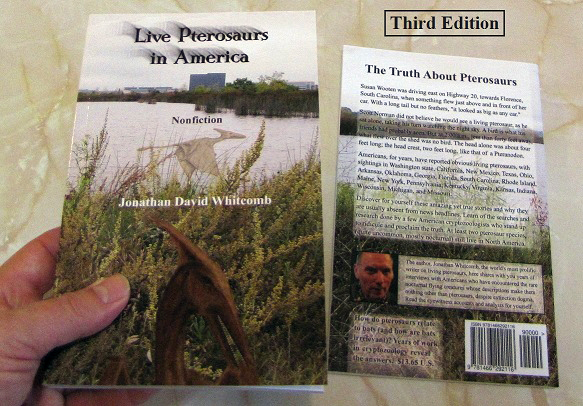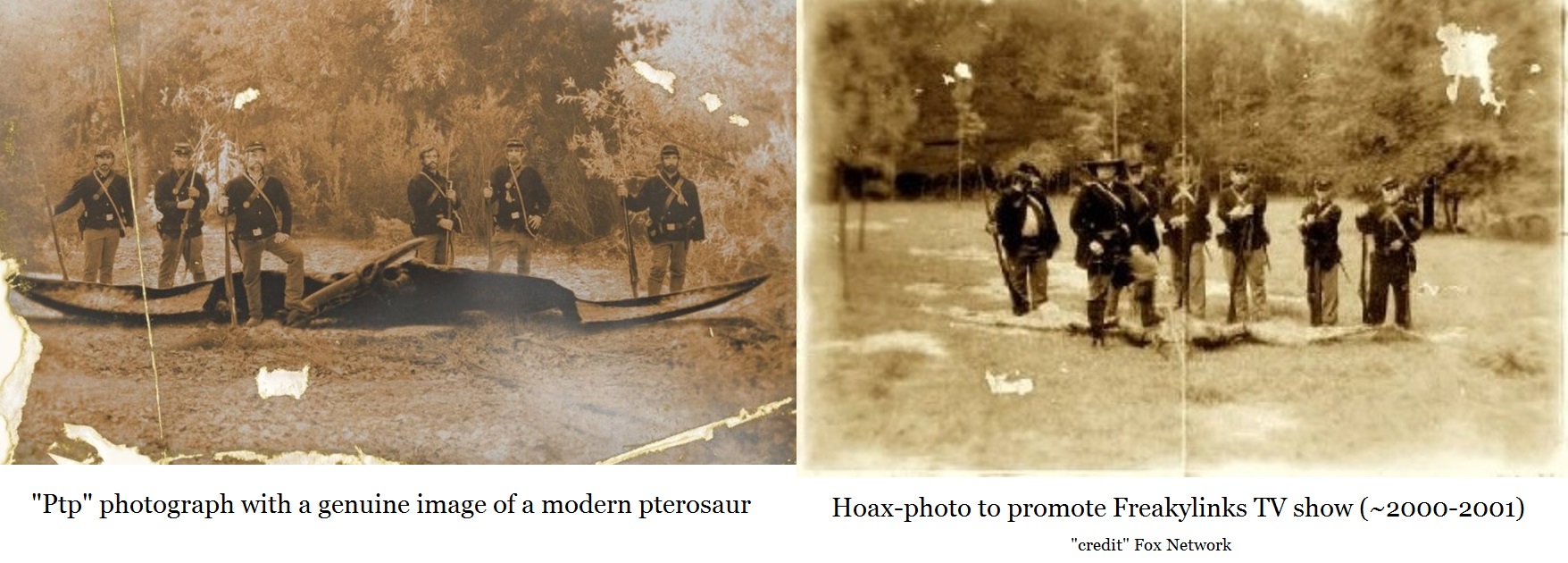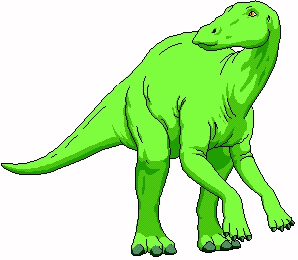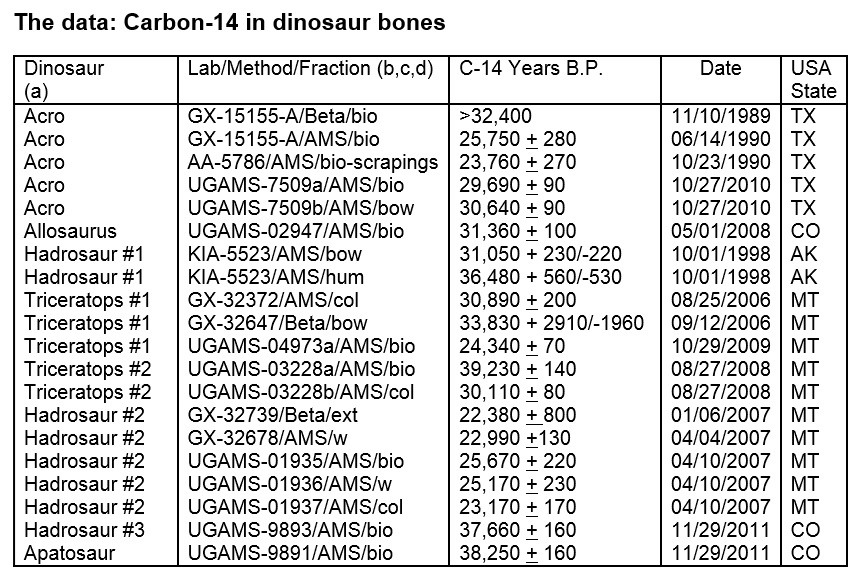By the modern-pterosaur expert Jonathan Whitcomb
Important Update:
Early in November, 2018, I withdrew my support for the image called “Ptp.” The reasons I have changed my position are explained elsewhere; part of the image is also present in an animation in one of the episodes of Walking with Dinosaurs.
I will leave the following original post intact, for whatever use it may be for readers (perhaps to learn something about how I fell into such a blunder).
Introduction
Years ago, a scientist in California began noticing details in a photograph, clues that the image of an apparent modern pterosaur was genuine. On January 14, 2017, I spoke with Clifford Paiva (a physicist) by phone. We agreed that the photo (now labeled “Ptp”) has a genuine photographic image of a modern pterosaur. Some people call this kind of animal a “flying dinosaur” or a “pterodactyl.” Let’s look at this from a scientific perspective, keeping an open mind to various possibilities.
The photo had been known by many people for a long time, but it had been confused with another photo, of a hoax Civil War reenactment, that had been made in imitation of the original. Compare the two photographs in Figure-1:
Figure-1: Original (Ptp) photo on the left; imitation on the right (click on image)
Comparing the two Apparent Civil War Photographs
Notice that the photo on the right has nothing in focus, which is not normal for Civil-War era photography. The one on the left, however, has both soldiers and the animal in focus.
Several things suggest the one on the right is a Civil War reenactment with actors dressed to look like soldiers of that period. It’s not that any one clue is proof by itself, but when taken together they at least strongly suggest it’s a hoax photo.
Notice one soldier in the photo on the right, the man on the far left of that image. It looks like his stomach is so large that he cannot button his shirt. That can be explained: Perhaps all the other apparent soldiers were regular Civil War reenactors, and one more man wanted to join them. The new man had never played that kind of part before, so he had to borrow at least part of a uniform. The shirt was too small, so he left it unbuttoned.
In addition, the stance of at least two of the “soldiers,” in the photo on the right, is unusual. In old Civil War photographs, one or two soldiers might be seen with arms folded across the chest; is a bit uncommon but not rare. For two soldiers to hold their rifles while folding their arms across their chests, however, appears strange. I’ve never seen a genuine Civil War photo that had two men standing like that.
But we have a direct way of judging the photo on the right: It was leaked out, early in the 21st century, that this was a hoax for the Freakylinks television show. Photoshop or something similar was probably used to make the modern photo appear to be old.
Now notice how the two photos resemble each other. Obviously one of them is imitating the other, but which is the older one? Several persons have reported that they remember the one we see on the left (in Figure-1). They say that it was in a book they had seen around the 1960’s or 1970’s. Some persons may have seen it even earlier. Combining that with the knowledge we have of the Freakylinks hoax, we can see that Ptp is the older one.
Many TV shows entertain with fiction, but in this case it created a problem, for many persons seem to have become confused by the two similar photos. When the subject of a “Civil War pterodactyl photo” comes up, they assume there’s only one photo and that it’s a joke or hoax. In addition, other persons assume, after learning of the hoax, that both photos must be fake. Those persons, however, probably do not look deeply into the clues, that are there for the viewing, in the older photograph: clues to the authenticity of Ptp.
Science and Objective Evaluations
The physicist Clifford Paiva examined the Ptp photo, finding several things that suggested that the image of an apparent Pteranodon is genuine. (Apparently the scientist felt that it was unnecessary to examine the TV-show hoax photo.)
The shadow under the boot of the soldier in front corresponds with shadows found on and under the image of the animal. This gives at least a strong suggestion that no digital pasting was done of a soldier-image being put onto another photograph.
That fits perfectly with what people tell us: This photo (Ptp) was seen in a book many years before Photoshop existed. But another question arises: Why would any hoaxer, who was an expert in modern computerized image manipulation, want to paste even one soldier onto a photograph that had a convincing Pteranodon image? And where would that hoaxer get such an incredible photograph?
Those questions arise because of what Paiva found in closer examinations of Ptp. The head suggests the animal is a Pteranodon or a modern pterosaur that appears much like a Pteranodon. But it’s not just the beak and head crest. The neck and shoulder also suggest it is something like that Pterodactyloid pterosaur.
By the way, pterosaurs are not technically dinosaurs. They’ve just been associated together because of old ideas about “primitive” animals living many millions of years ago.
Why are dinosaurs and pterosaurs not nearly as common today as they were in the past? Look to the one major cause of complete extinction: human interference. Let the present be the key to the past and recognize how easy it would have been, over thousands of years, for humans to have destroyed many species of dinosaurs and pterosaurs.
Most reported sightings of dinosaurs appear to be confined to certain areas of central Africa and Papua New Guinea. Yet over the past 14 years, I’ve received reports from eyewitnesses from five continents, from persons of various backgrounds, who have seen apparent modern pterosaurs. It seems that the “primitive” animals that can fly through the air have survived extinction and expanded their ranges worldwide, although they seem to be at least somewhat rare and mostly nocturnal.
Conclusion
This photograph (Ptp) deserves a much closer look. It appears to support the many eyewitnesses who report large featherless flying creatures in a number of areas of the world, including North America. We need to look past old 19-century dogmas about universal extinctions of all species of dinosaurs and pterosaurs. Keep an open mind to new discoveries.
*****************************************************************
Update: I, Jonathan Whitcomb, no longer support this image as evidence for a modern living pterosaur in 19th century North America. I maintain, however, my support for the many eyewitness testimonies in the 20th and 21st centuries.
###
copyright 2017 Jonathan David Whitcomb
.
Pterodactyl in a Civil War photograph
Someone looking for evidence of Civil War reenactment may have little difficulty noticing one or more problems with the photo on the right. That’s a hoax-photo, made to promote the Freakylinks TV series . . . The photo on the left, however, is older, apparently seen by many readers of a book in the mid-20th century.
Introduction to the Civil War photograph, comparing it to a hoax-photo, with a short history of living-pterosaur investigations regarding credibility
Ropen-pterosaur or “dinosaur bird”
The photo shown here, recently given the label of “Ptp,” has been declared to have a genuine image of a modern pterosaur. The proclamation was given by the physicist Clifford Paiva and the cryptozoology author Jonathan Whitcomb on January 14, 2017.
.
*********************************************************************************
.

Live Pterosaurs in America (third edition), nonfiction cryptozoology book
.







